| Black Panthers:
Scenario Preview, Part Two
By Mike Bennighof, Ph.D.
September 2021
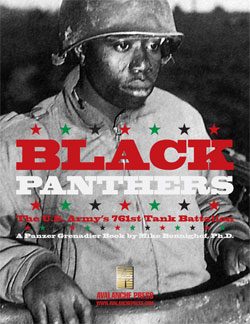 While Panzer Grenadier: Black Panthers is the story of race in America, it’s also a game expansion, for Panzer Grenadier: Elsenborn Ridge. We follow the 761st Tank Battalion from its initial experience of combat in front of Metz in November 1944 on through the Battle of the Bulge and into Germany. It’s of course in our story-arc format, using the scenarios as part of the narrative. Let’s have a look at the 761st’s first chapter. While Panzer Grenadier: Black Panthers is the story of race in America, it’s also a game expansion, for Panzer Grenadier: Elsenborn Ridge. We follow the 761st Tank Battalion from its initial experience of combat in front of Metz in November 1944 on through the Battle of the Bulge and into Germany. It’s of course in our story-arc format, using the scenarios as part of the narrative. Let’s have a look at the 761st’s first chapter.
761st Tank Battalion
The Lorraine Campaign: Part One
Scenario One
First Contact
8 November 1944
Assigned to the 26th “Yankee” Infantry Division, a unit also entering its first intense experience of combat, the 761st Tank Battalion would spearhead an assault on German positions west of Metz. Following standard procedure, the battalion’s companies were parceled out to the division’s three infantry regiments, with Able Company’s Shermans attached to the 104th Infantry Regiment.
Conclusion
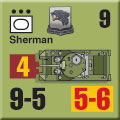 The tank-supported attack made progress up the road toward Hill 310, despite German attempts to slow them. Mines proved a greater hindrance than German anti-tank guns, claiming three of Able Company’s Shermans. The Germans rained down mortar and automatic weapons fire, but as yet did not stand firmly to hold their ground. That would come soon enough. The tank-supported attack made progress up the road toward Hill 310, despite German attempts to slow them. Mines proved a greater hindrance than German anti-tank guns, claiming three of Able Company’s Shermans. The Germans rained down mortar and automatic weapons fire, but as yet did not stand firmly to hold their ground. That would come soon enough.
Notes
The Americans are at full strength with massive artillery support, but the Germans have had a nice long pause to prepare their defenses. The Germans aren’t very good (actually, they’re pretty bad) but they do have numbers and weapons and prepared positions. This is what the separate tank battalions were created to do: grind up enemy defenses alongside the infantry.
Scenario Two
That Big Hill Up There
8 November 1944
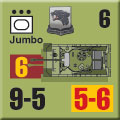 In the center of the Yankee Division’s lineup, the 101st Infantry Regiment had the 761st Tank Battalion’s Baker Company, a platoon from Able Company, and some tank destroyers from the 602nd Tank Destroyer Battalion pretending to be tanks as well. The assault jumped off quickly and successfully, seizing its initial objectives – bridges over the Seille River. But then came Hill 310, what 26th Infantry Division commander Maj. Gen. Willard Paul called “That big hill up there.” In the center of the Yankee Division’s lineup, the 101st Infantry Regiment had the 761st Tank Battalion’s Baker Company, a platoon from Able Company, and some tank destroyers from the 602nd Tank Destroyer Battalion pretending to be tanks as well. The assault jumped off quickly and successfully, seizing its initial objectives – bridges over the Seille River. But then came Hill 310, what 26th Infantry Division commander Maj. Gen. Willard Paul called “That big hill up there.”
Conclusion
The early American success implied that the Germans had little will to fight, but that was proven wrong once the attackers came within range of the hillside. The Americans met a storm of automatic weapons and mortar fire, and fell back with heavy losses. The newly-introduced tank and infantry commanders cooperated poorly when they did at all, with the over-eager tankers firing at German targets they spotted instead of those the infantry needed cleared.
Notes
The Germans suck a little less in this sector, and they’re on top of a really nasty hill. Plus they have a lot of artillery (as things go for the Germans at this stage of the war). This is going to be another nasty, close-quarters fight.
Scenario Three
Charlie Company Stalls
8 November 1944
 The right flank of 26th Infantry Division would undertake a pinning attack to keep the German defenders in this sector occupied. Here the 761st Tank Battalion’s Charlie Company supported the 328th Infantry Regiment as it pressed forward into the German-held towns of Bezange-la-Petite and Moncourt, both of them right behind the German front line. The right flank of 26th Infantry Division would undertake a pinning attack to keep the German defenders in this sector occupied. Here the 761st Tank Battalion’s Charlie Company supported the 328th Infantry Regiment as it pressed forward into the German-held towns of Bezange-la-Petite and Moncourt, both of them right behind the German front line.
Conclusion
The 328th Infantry had only limited objectives, which was probably good since it made only limited gains and failed to meet expectations on the day. Charlie Company lost three tanks in the effort, including one entire Sherman crew apparently killed by carbon monoxide poisoning. The Germans had been expected to crumble, but their hastily-assembled People’s Grenadier divisions fought back stubbornly.
Notes
It’s another assault into the teeth of well-prepared German defenses, but this time the start line is right on top of the defenders. The Americans have to chew up the defenses and the Germans in order to win; the Germans have to survive. That latter is a tall order.
Scenario Four
The Deadly Ditch
9 November 1944
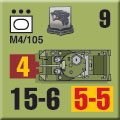 As freezing rain and snow began to fall heavily on the battlefield, 26th Infantry Division shifted to the left to bring all of its regiments to bear on Hill 310. The 2nd Cavalry Group, attached to the division for the operation, would cover the gap this made in the American lines. Many of the infantrymen had shrugged off even their field jackets during the previous day’s fighting, and now suffered from the wet and the cold. And the Germans. As freezing rain and snow began to fall heavily on the battlefield, 26th Infantry Division shifted to the left to bring all of its regiments to bear on Hill 310. The 2nd Cavalry Group, attached to the division for the operation, would cover the gap this made in the American lines. Many of the infantrymen had shrugged off even their field jackets during the previous day’s fighting, and now suffered from the wet and the cold. And the Germans.
Conclusion
The Shermans of Charlie Company ran into an anti-tank ditch, where they became easy prey for the anti-tank guns close behind it. Nine tanks were knocked out in quick succession, with 14 of their crewmen killed either in them or while attempting to escape the trap. In just over 24 hours of combat, Charlie Company had been effectively destroyed.
Notes
The Americans know where the anti-tank ditch is, but they’re probably going to have to cross it to meet their victory conditions as long as the German player has set up carefully. The weather sucks, the ground is wet, and the Germans have anti-tank guns behind their barrier.
Scenario Five
Night March
9 November 1944
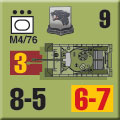 While the 104th Infantry assaulted Hill 310 from the north-west, the neighboring 101st Infantry sent its 1st Battalion on a night march to redeploy and strike the southern edge of the Cȏte St. Jean. Despite the lack of combat experience among both the armor and infantry officers, and the poor weather, the infantry battalion and Able Company of the 761st Tank Battalion who would support them arrived at their assembly point and launched their attack as scheduled. It was after that when things began to go wrong. While the 104th Infantry assaulted Hill 310 from the north-west, the neighboring 101st Infantry sent its 1st Battalion on a night march to redeploy and strike the southern edge of the Cȏte St. Jean. Despite the lack of combat experience among both the armor and infantry officers, and the poor weather, the infantry battalion and Able Company of the 761st Tank Battalion who would support them arrived at their assembly point and launched their attack as scheduled. It was after that when things began to go wrong.
Conclusion
The American battalion attempted a double envelopment, which failed in the face of heavy German automatic weapons fire. Several of the supporting tanks became mired in the mud that had developed overnight thanks to the heavy rain. But two companies from the regiment’s 3rd Battalion arrived to join the assault and unhinge the German positions.
Notes
The American player is going to have some tough choices, stuck with the brilliant double-envelopment plan that just means the Americans start out in two weak groups too far apart to support one another, with the Germans in between. But help is on the way, and the reinforcements can make a huge difference if the Americans have made some progress. They’re not going to do much good if the Americans just hole up and wait for them.
And that’s Chapter One of the 761st’s tale. Next time, it’s Chapter Two.
You can order Black Panthers right here.
You will need Panzer Grenadier: Elsenborn Ridge to play Black Panthers.
You can order them together for one low price right here.
Sign up for our newsletter right here. Your info will never be sold or transferred; we'll just use it to update you on new games and new offers.
Mike Bennighof is president of Avalanche Press and holds a doctorate in history from Emory University. A Fulbright Scholar and NASA Journalist in Space finalist, he has published an unknowable number of books, games and articles on historical subjects.
He lives in Birmingham, Alabama with his wife, three children and his dog, Leopold.
Want to keep Daily Content free of third-party ads? You can send us some love (and cash) through this link right here. |
